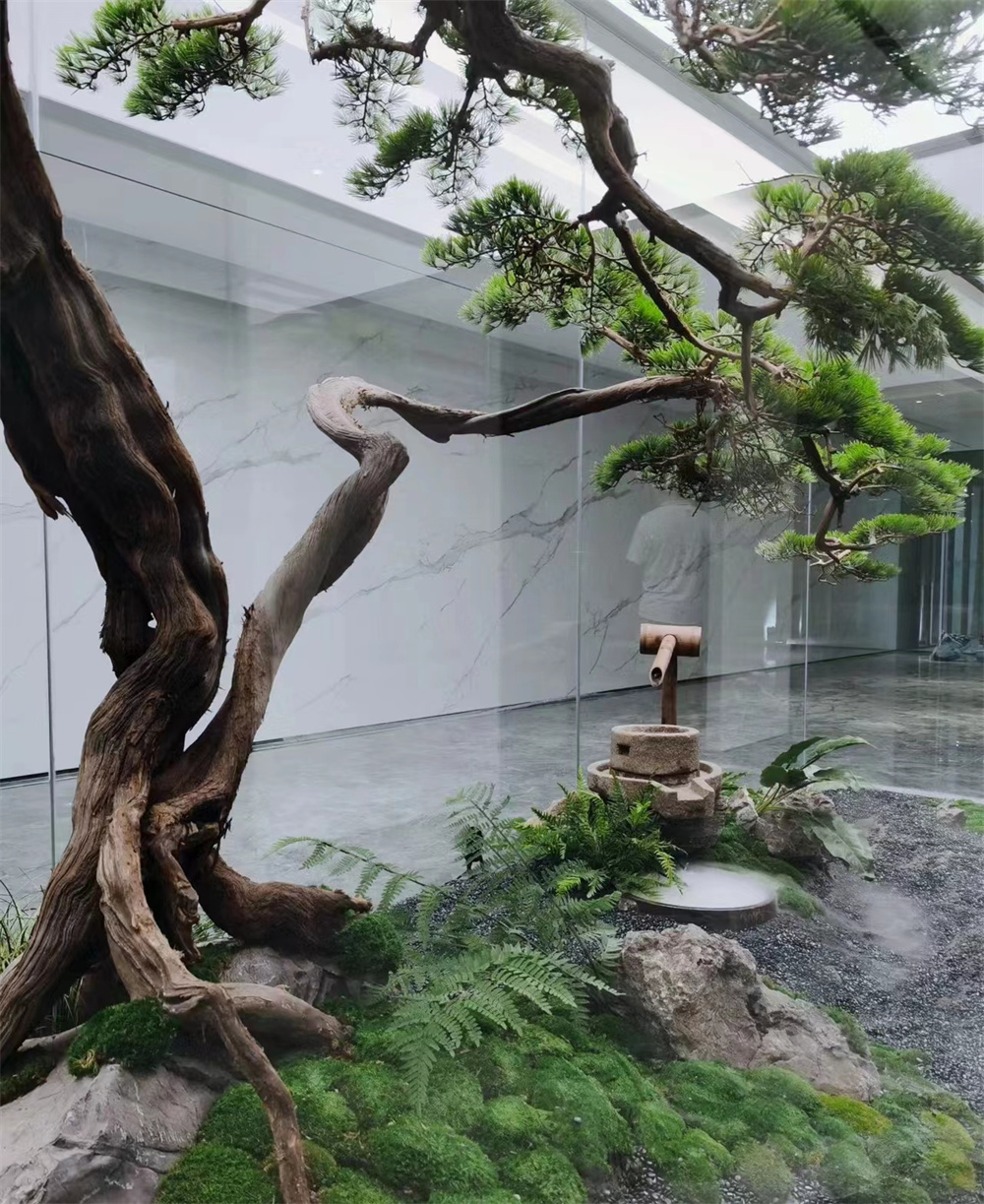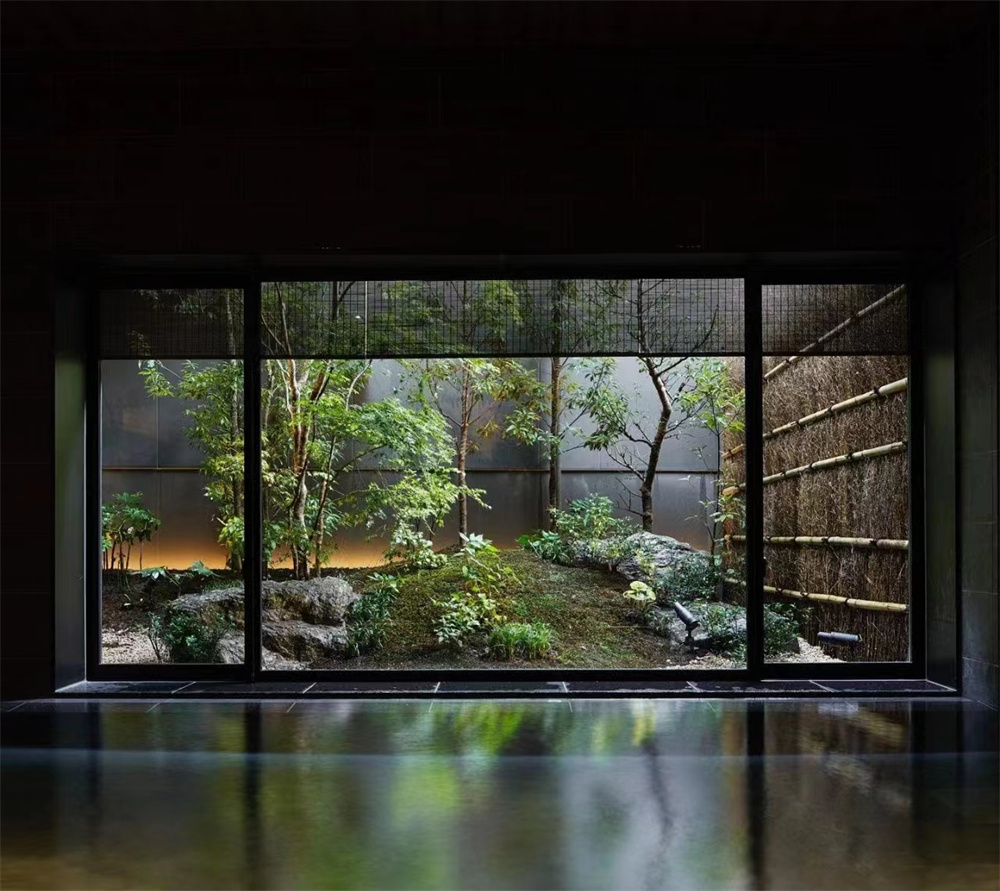枯山水景观设计的内容是什么呢 (枯山水景观设计的内容是什么呢英语)
温馨提示:这篇文章已超过516天没有更新,请注意相关的内容是否还可用!
The content of the design of dry landscape gardens, also known as karesansui or Zen gardens, includes various elements that aim to create a serene and contemplative environment. These elements can be categorized into the following:1. Rocks: Rocks play a central role in dry l
- 本文目录导读:
- What is the content of the design of dry landscape gardens?
- What are some English words related to the design of dry landscape gardens?
- Conclusion
What is the content of the design of dry landscape gardens?
The content of the design of dry landscape gardens, also known as karesansui or Zen gardens, includes various elements that aim to create a serene and contemplative environment. These elements can be categorized into the following:
1. Rocks: Rocks play a central role in dry landscape gardens. They are carefully selected and positioned to represent natural formations such as mountains, islands, or waterfalls. The rocks are arranged in a way that creates a sense of balance and harmony.
2. Gravel or Sand: Gravel or sand is used to represent water or the ocean in dry landscape gardens. It is raked in specific patterns to mimic the movement of water or waves. The raking of the gravel or sand is considered a meditative practice and is often done by the garden's caretaker.
3. Moss: Moss is often used to cover the ground or rocks in dry landscape gardens. It adds a sense of age and tranquility to the garden and creates a soft and lush contrast to the rocks and gravel.
4. Bridges and Stepping Stones: Bridges and stepping stones are used to create paths and allow visitors to navigate through the garden. They are carefully positioned to guide the flow of movement and enhance the overall design.
5. Plants: Although dry landscape gardens are predominantly composed of rocks and gravel, carefully chosen plants are sometimes incorporated to add color and texture. These plants are typically low-maintenance and are selected for their ability to withstand dry conditions.
6. Lanterns and Pagodas: Lanterns and pagodas are often placed strategically in dry landscape gardens to create focal points and add a sense of spirituality. They are usually made of stone or metal and are designed to blend harmoniously with the surrounding elements.
7. Symbolism: Dry landscape gardens often incorporate symbolic elements that represent various aspects of nature, such as the cycle of life or the passage of time. These symbolic elements can be represented through the arrangement of rocks, patterns in the gravel, or the choice of plants.
What are some English words related to the design of dry landscape gardens?
1. Karesansui: The Japanese term for dry landscape gardens.

2. Zen gardens: Another term used to describe dry landscape gardens, emphasizing their connection to Zen Buddhism and meditation.
3. Serenity: A state of calm and peacefulness that dry landscape gardens aim to create.
4. Contemplation: The act of deep thought and reflection that dry landscape gardens encourage.
5. Balance: The harmonious arrangement of rocks, gravel, and other elements in a dry landscape garden.
6. Harmony: The overall sense of unity and coherence in a dry landscape garden.

7. Raking: The practice of creating patterns in the gravel or sand of a dry landscape garden using a rake.
8. Tranquility: A state of calmness and tranquility that dry landscape gardens evoke.
9. Meditation: The practice of focusing one's mind and achieving a state of deep relaxation and awareness, often associated with dry landscape gardens.
10. Symbolism: The use of elements in a dry landscape garden to represent deeper meanings or concepts.
Conclusion
In conclusion, the content of the design of dry landscape gardens includes rocks, gravel or sand, moss, bridges and stepping stones, plants, lanterns and pagodas, as well as symbolic elements. The aim of these elements is to create a serene and contemplative environment that encourages contemplation, meditation, and a sense of harmony and balance. The English words related to the design of dry landscape gardens include karesansui, Zen gardens, serenity, contemplation, balance, harmony, raking, tranquility, meditation, and symbolism.





还没有评论,来说两句吧...